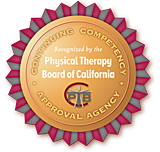
Learning The Method
MNRI® Dynamic and Postural Reflex Integration
Course Overview
The Dynamic & Postural Reflex Integration course provides the foundation for professionals and parents to understand the importance of primary motor reflex pattern maturation, why a reflex might not be integrated, the impact a non-integrated reflex can have, and the MNRI techniques designed to assess and integrate reflexes. Primary motor reflex patterns emerge along a predictable developmental continuum, with each successive reflex emerging to secure a child’s survival and protection as his system matures and advances. When adequately engaged, each reflex anchors neurologically more deeply a physiological, emotional and psychological sense of security, freeing an infant to focus on exploring, learning, and fully advancing through all stages of primary motor reflex maturation. It is through this complete integration process that primary motor reflex patterns form the foundation for related motor reflex schemes (sitting up, crawling, walking, etc) to mature and for each of us to reach our full potential over time, anchoring emotional and behavioral regulation, and advancing motor, communication, and cognitive learning. Congenital disorders or traumatic events that occur in utero, at birth, or anytime after birth can interrupt the activation, maturation and integration of a primary motor reflex pattern. Depending upon the number of reflexes impacted and the maturational deficits of each impacted reflex, a broad spectrum of life challenges can occur.
The MNRI® Dynamic and Postural Reflex Integration course explores:
- The general MNRI Method and the role played by the Dynamic and Postural Reflex Integration Program
- The progression primary motor reflex patterns beginning in utero and continuing through life
- The role primary infant reflex patterns play in establishing subsequent related motor reflex schemes and the development of advanced motor, communication and cognitive abilities and emotional and behavioral regulation
- MNRI techniques to assess, pattern and integrate primary motor reflex patterns
- How to create MNRI primary motor reflex integration programs for individual clients
- How to incorporate use of MNRI Dynamic and Postural Integration course content into daily client and home practice
Learning Objectives: MNRI® Dynamic and Postural Reflex Integration
1. Describe the Masgutova Neurosensorimotor Reflex Integration (MNRI) Method.
2. Describe the role of a reflex and its sensory, motor and central nervous system mechanisms, the primary motor reflex patterns, the subordinate role each plays in the maturation of more complex related motor reflex schemes (sitting-up, crawling, etc), the development of learned motor, communication, and cognitive abilities.
3. Describe the effects of a non-integrated reflex on the brain-body system as well as the effects on receptive and expressive language skills.
4. Define, classify and demonstrate (through in-class demonstration) the body’s motor coordination systems, the corresponding brain level responsible for managing each system, and the implications for reflex integration.
5. Compare and contrast dynamic and postural motor reflex patterns found in the coronal, sagittal and axial body plane coordination systems.
6. Analyze the reflex integration Process:
a. Reflex circuit => Reflex actions => Basic pattern => Variant patterns => Intentional movement => Skill development => Motor planning
7. Describe reflexes as the fundamental foundation for optimal motor, communication and cognitive learning and growth.
8. Demonstrate how to implement the MNRI techniques to integrate each primary motor reflex pattern.
9. Demonstrate how these individual corrective programs can be used to enhance overall emotional, motivational, cognitive, communication and motor challenges in a daily practice.
10. Apply through demonstration and hands-on-practice the MNRI techniques designed to activate and integrate primary motor reflex patterns.
11. Describe through course discussion and instructor demonstration how to deal with unique and challenging client situations using MNRI method techniques.
12. Demonstrate for course instructor the ability to appropriately apply integration procedures for each primary motor reflex pattern.
13. Describe and develop strategies to incorporate the use of the MNRI Dynamic and Postural Reflex Integration course content into daily client and home practice.
Course Agenda:
Hour 1: Movement as basis of Natural Development
Hour 2-3: Masgutova Method™ of Neruosensorimotor Reflex Integration
Hour 4: Reflexes as the Neuro-Physiological Basis for Development of Infant Movements
Break
Hours 5-6: Body Motor Coordination Systems and Brain Levels.
Hours 7-8: Explain MNRI® Reflex Assessment
Break
Hour 9: Dynamic and Postural Infant Reflex patterns Integration-Right/Left Motor Coordination System.
Hours 10-11: Dynamic Reflexes: Robinson Hand Grasp Reflex
Hour 12: Hands Pulling Reflex
Break
Hour 13-14: Babinski Reflex
Hour 15: Postural Reflexes: ATNR and Bonding
Hour 16: Integration of Reflex patterns within Right-Left Body Sides MCS.
Break
Hour 17: Dynamic and Postural Infant Reflex patterns Integration-Up-Down Motor Coordination System
Hour 18-19: Dynamic Reflexes: Automatic Gait, Bauer Crawling
Hour 20: Moro Embrace Reflex
Break
Hours 21-22: Postural Reflexes (Hands Supporting Reflex and Landau Reflex)
Hour 23: Other Reflexes: Pavlov Orientation Reflex
Hour 24: Integration of Reflex patterns within Up and Down Body Sides MCS
Break
Hour 25: Dynamic and Postural Infant Reflex patterns Integration-Front-Back Motor Coordination System
Hours 26-27: Dynamic Reflexes: Spinal Gallant and Spinal Pereze Reflexes
Hour 28: Postural Reflexes: Symmetrical Tonic Neck Reflex
Break
Hours 29-30: Trunk Extension Reflex and Tonic Labyrinthine Reflex
Hour 31: Integration of Reflex patterns within Front-Back Body Sides MCS
Hour 32: Implementation of Reflex Development and techniques in therapy practices




